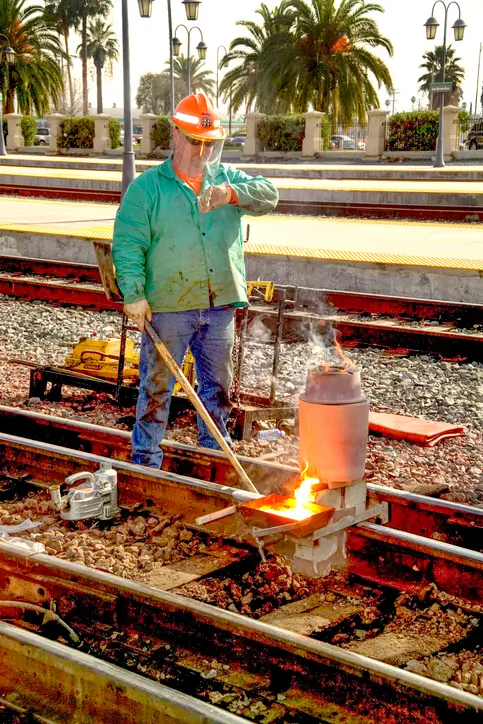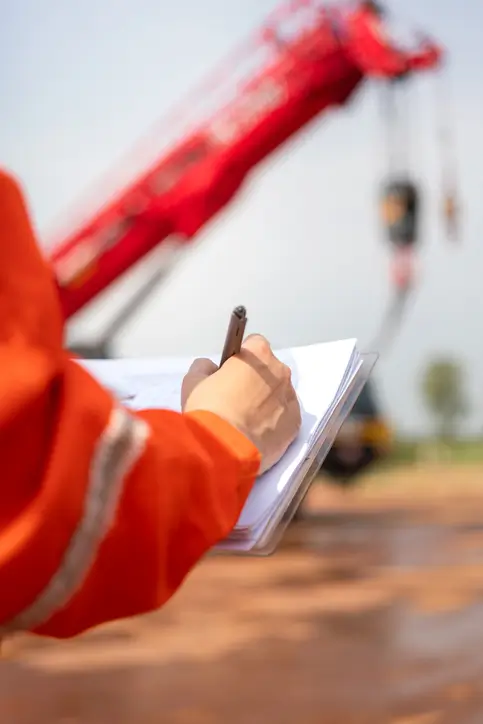As temperature rises, concerns related to heat stress spread all across the workplace, irrespective of the industry. However, in industries like construction, where a lot of outdoor jobs are involved, there are a number of heat stress hazards.
Prolonged exposure to high temperatures, coupled with physical exertion, can lead to illnesses ranging from heat exhaustion to life-threatening heat stroke. It’s important for organizations to follow proper regulations and policies to overcome heat-related illnesses. Employees should be given proper guidance, tools, and training to combat the dangers.
Here are 9 proven ways to prevent heat stress in the workplace.
9 Ways To Prevent Heat Stress In The Workplace
When exposed to high temperatures, the body stops controlling the internal temperature. Heat stress escalates from thirst and causes heart attacks. People often face heat cramps as well. So, here are some ways to ensure heat stress prevention in the workplace.
1. Provide Plenty Of Drinking Water
In the workplace, employers should provide water sources for employees. There should be cool, potable water available at multiple locations on the job site. Encourage workers to drink small amounts of water every 15–20 minutes.
It’s important to keep water at a drinkable temperature. It’s also critical to let employees know that consuming sugary and caffeinated drinks can contribute to dehydration. Moreover, place signs or reminders near work areas promoting hydration.

2. Schedule Frequent Rest Breaks
Regular breaks in cool or shaded areas allow workers’ bodies to recover from heat exposure. A good practice is to mandate 5-10 minute rest periods every hour when temperatures exceed 85°F (29°C), increasing frequency as temperatures rise. These breaks should be taken in designated cooling areas away from heat sources.
When the weather condition exceeds 90°F (32°C), employers can consider implementing a buddy system to guide employees to monitor each other for signs of heat stress. Job rotation can also help by ensuring no single worker bears the brunt of the most physically demanding tasks during peak heat periods.

3. Use Shade Or Cooling Areas
Creating protected spaces where workers can escape direct sunlight significantly reduces heat stress risk. Organizations should go for portable shade canopies or pop-up tents and place them strategically near work areas to minimize travel time to shade.
If optimal cooling is needed, go for air conditioners or misting stations. Other than these practices, employees should be provided with cooling vests with phase-change materials or ice packs. It can help maintain safe body temperatures for workers who must remain in hot zones.

4. Wear Lightweight, Breathable Clothing
Proper PPE is a must-have for employees to combat heat stress. Proper work attire plays a crucial role in heat management.
Light-colored, loose-fitting clothing made from moisture-wicking synthetic fabrics helps keep workers cooler than traditional cotton workwear. Wide-brimmed hats protect the face and neck from direct sunlight, while UV-protective clothing offers additional defense against solar radiation.
Some companies provide cooling bandanas or evaporative cooling towels that workers can wet for instant relief. It’s important to provide safety gear like hard hats with ventilation ports and breathable safety vest designs.

5. Acclimate Workers To Heat Gradually
Heat acclimatization is a critical but often overlooked safety measure. New workers or those returning after an absence need 7-14 days to gradually build a tolerance to hot conditions. Employers should assign only 50% of the normal workload to such employees so that they can gradually build their tolerance.
Pay special attention to workers with pre-existing medical conditions or those taking medications that may affect heat tolerance. Even experienced workers need re-acclimatization after vacations or sick leave exceeding a week.

6. Monitor For Signs Of Heat Illness
Careful monitoring can help prevent minor heat stress from turning into serious issues. It’s important to train all employees to recognize early warning signs like headache, dizziness, nausea, and excessive sweating (or lack of sweating in advanced cases).
Most importantly, every employee should be vigilant about each other’s health. They should monitor their teammates and report if there is an issue. Supervisors should be trained to spot behavioral changes like confusion or irritability that may indicate heat illness.

7. Train Employees On Heat Safety
Providing comprehensive training to employees is highly recommended, and in many states, it is compulsory. Employees should be aware of the risks and prevention strategies. Training should cover how to recognize symptoms in themselves and others, proper hydration techniques, and the importance of rest breaks.
Multilingual training materials ensure non-English speaking workers receive the same critical information. This safety training should also emphasize that reporting heat stress symptoms is encouraged, not penalized, as many workers avoid speaking up for fear of appearing weak or losing pay.

8. Adjust Work Schedules To Avoid Peak Heat
Whenever possible, plan the most physically demanding tasks for early morning or late afternoon.
Avoid scheduling strenuous work between 12 p.m. and 4 p.m., when heat and UV levels are highest. Rotating workers and implementing longer rest periods during peak heat can reduce the risk of heat exhaustion.
Use shaded or cooler areas for breaks and lighter tasks during mid-day hours.
Smart scheduling not only protects workers—it also improves focus and productivity in hot conditions.

9. Use Fans Or Ventilation Systems
Ventilation systems in the manufacturing and construction industries are a must-have. Proper air circulation is essential for indoor and outdoor work areas. Industrial fans should be positioned to maximize airflow where workers are stationed.
In enclosed spaces, exhaust ventilation systems help remove hot air that accumulates near the ceilings. For outdoor work, portable misting fans can lower ambient temperatures by several degrees.

Conclusion
Organizations need to have a proactive, multi-faceted approach tailored to their work environment. By implementing the above-listed 9 techniques, companies can overcome major heat stress incidents. Other than protecting the lives of employees, through these practices, companies can improve productivity, reduce absenteeism, and help avoid OSHA citations.





